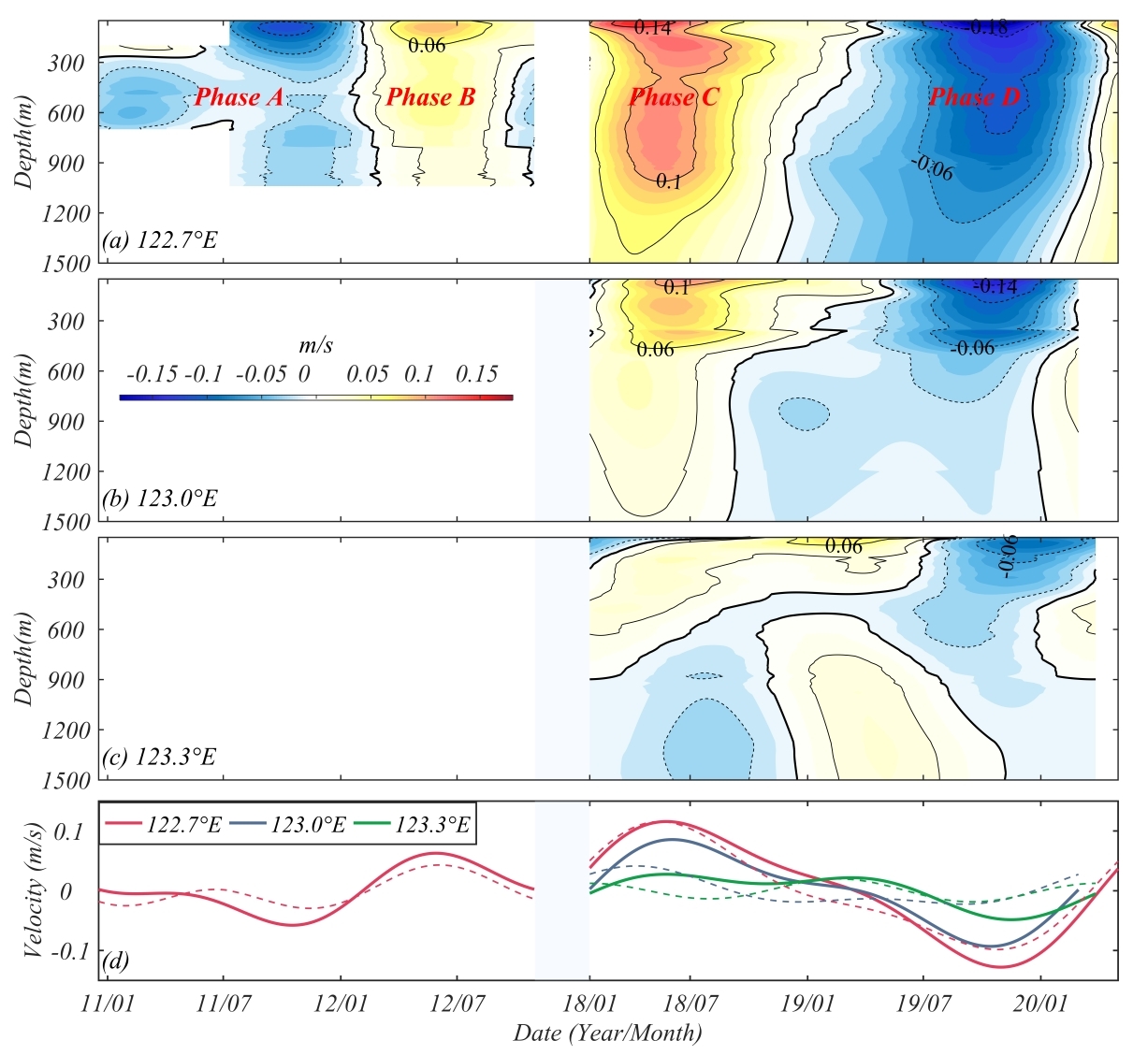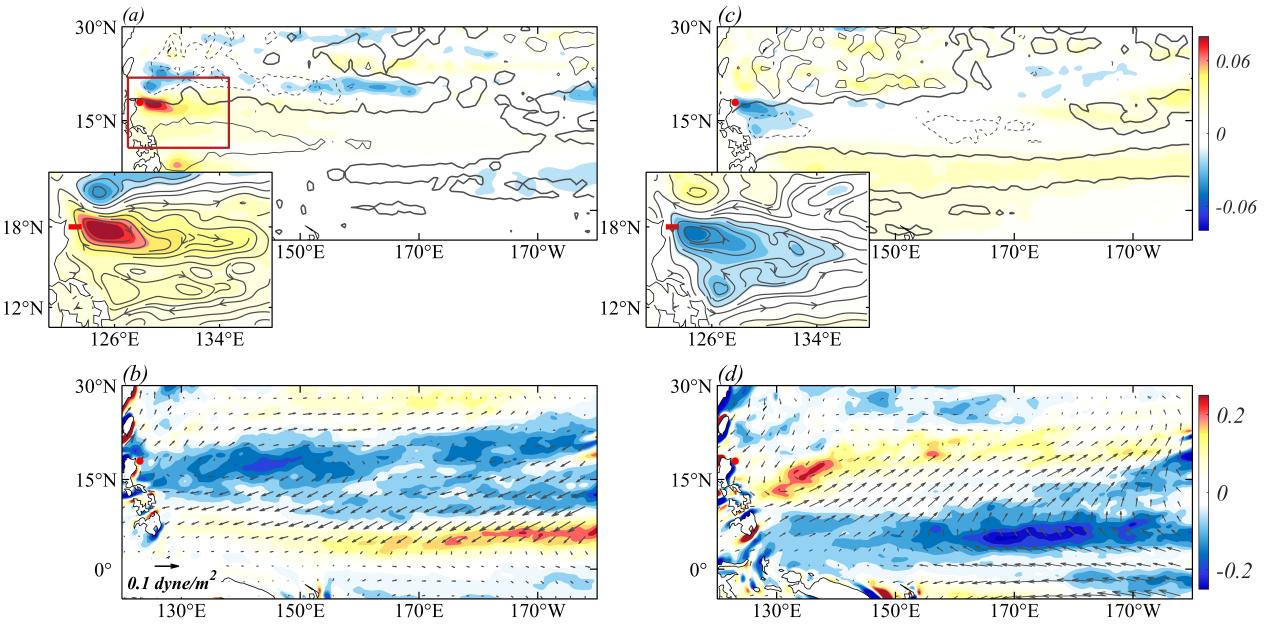Tropical and Subtropical Wind Forcing Could Affect Interannual Variability of Kuroshio and Luzon Undercurrent
Kuroshio in the western North Pacific is one of the world's most energetic western boundary currents. In the east of Luzon Island, the northward Kuroshio at its origin and the underlying southward Luzon Undercurrent (LUC), play an important role in shaping marine ecosystems and climate in the Pacific and neighboring marginal seas through transporting a large amount of mass and heat.
Recently, the research team led by Prof. HU Shijian from the Institute of Oceanology of the Chinese Academy of Sciences (IOCAS) reported the interannual variability of the Kuroshio and LUC observed by a mooring array and investigated the role of tropical and subtropical wind forcing in the North Pacific.
The study was published in Progress in Oceanography on Oct. 11.
Researchers found that the interannual variations of upper-layer Kuroshio is in phase with the lower-layer LUC, as shown in direct velocity observations from a mooring during December 2010–October 2012 and three moorings during January 2018–May 2020 deployed at 18°N. The interannual variability is strong in the Kuroshio but weakens substantially in the LUC. They propose a proxy of the Kuroshio and LUC based on good agreement between the acoustic Doppler current profiler (ADCP) and satellite altimeter measurements. The proxy during 1993–2020 shows that the interannual sea level slope across the Kuroshio is primarily associated with sea level fluctuations on its eastern flank.
Furthermore, diagnostic analysis and sensitivity experiments from a simplified ocean model suggest that the wind forcing in the subtropical northwestern Pacific play an essential role in the interannual variability of Kuroshio and LUC's strength during the observation periods in 2011 and 2018–2020, although the tropical winds dominate the interannual variability of the two boundary currents during most time of the past three decades (1993–2020).
The pronounced anomalous wind forcing is suggested to further exert significant influence in the development of water mass properties. "The mooring observations show that the subsurface water mass in the LUC at the depth of approximately 650–800 m experienced a considerable freshening event from July 2019 until at least January 2020, resulting from abnormally strong subtropical wind forcing," said MA Jie, first author of the study.
"Our findings deepen the understanding of the western boundary currents in the Indo-Pacific Ocean, where the impact on the process of global warming is crucial. The Maritime Silk Road provides an opportunity for relevant countries in the Indo-Pacific to better strengthen ocean observation through broader cooperation and contribute to better climate prediction and response to climate change," said Prof. HU, the corresponding author.
This work was supported by the National Natural Science Foundation of China, the Shandong Provincial Natural Science Foundation, the Strategic Priority Research Program of CAS, and the CAS Interdisciplinary Innovation Team.

Fig. 1 Time–depth plots of anomalous meridional velocity at (a) 122.7°E, (b) 123.0°E, and (c) 123.3°E along 18°N. (d) The corresponding vertical mean of meridional velocity averaged over 50–500 m (solid line) and 500–1000 m (dashed line) at three mooring sites.

Fig. 2 (a) The composite interannual AVISO SLA (color shading) and Argo D20A (contours) results over the (a) positive and (b) negative phases of the Kuroshio transport proxy. (c)–(d) Same as (a)–(b), but for the corresponding ERA-5 wind stress curl anomalies (color shading) and wind stress anomalies (vectors).
Ma, J., Z. Zhang, S. Hu*, C. Villanoy, X. Guo, F. Wang, and D. Hu. (2023). Observed interannual variability of the Kuroshio and Luzon Undercurrent associated with tropical and subtropical wind forcing. Progress in Oceanography, 219, 103146.
(Text by MA Jie)
Media Contact:
ZHANG Yiyi
Institute of Oceanology
E-mail: zhangyiyi@qdio.ac.cn
(Editor: ZHANG Yiyi)